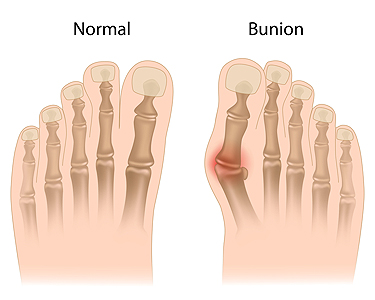
A bunion is most commonly recognized as the bony bump that forms at the base of the big toe, but it may go by different names, depending on its location or severity. The medical term for a traditional bunion is hallux valgus, which refers to the sideways deviation of the big toe. When a similar bump forms at the base of the little toe, it is often called a bunionette or tailor’s bunion. These changes in terminology reflect differences in position, underlying cause, or the particular joint affected. Regardless of the name, bunions are usually caused by inherited foot structure, poor footwear, or conditions like arthritis. They can lead to pain, stiffness, and difficulty with shoes. Early treatment can reduce symptoms and slow progression. If you have a visible bump near your toe joint or discomfort when walking, it is suggested you see a podiatrist for proper evaluation and options.
If you are suffering from bunions, contact one of our podiatrists of Bergen Foot & Ankle. Our doctors can provide the care you need to keep you pain-free and on your feet.
What Is a Bunion?
A bunion is formed of swollen tissue or an enlargement of boney growth, usually located at the base joint of the toe that connects to the foot. The swelling occurs due to the bones in the big toe shifting inward, which impacts the other toes of the foot. This causes the area around the base of the big toe to become inflamed and painful.
Why Do Bunions Form?
Genetics – Susceptibility to bunions are often hereditary
Stress on the feet – Poorly fitted and uncomfortable footwear that places stress on feet, such as heels, can worsen existing bunions
How Are Bunions Diagnosed?
Doctors often perform two tests – blood tests and x-rays – when trying to diagnose bunions, especially in the early stages of development. Blood tests help determine if the foot pain is being caused by something else, such as arthritis, while x-rays provide a clear picture of your bone structure to your doctor.
How Are Bunions Treated?
- Refrain from wearing heels or similar shoes that cause discomfort
- Select wider shoes that can provide more comfort and reduce pain
- Anti-inflammatory and pain management drugs
- Orthotics or foot inserts
- Surgery
If you have any questions, please feel free to contact our offices located in Fort Lee, NJ and Flushing, NY . We offer the newest diagnostic and treatment technologies for all your foot care needs.
